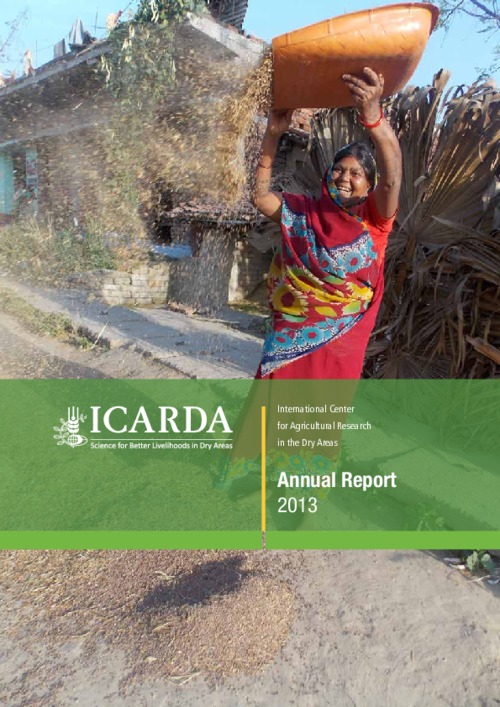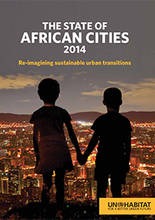Land-use planning in the Moluccas: What of customary tenure security?
Territorial Entanglements: Ambiguities of Giving Back in Northwestern Laos
Land Governance in South Sudan : Policies for Peace and Development
Rural Development - Common Property Resource Development Communities and Human Settlements - Urban Slums Upgrading Public Sector Management and Reform Urban Development - Urban Housing Public Sector Economics Public Sector Development Environment - Sustainable Land Management
ICARDA Annual Report 2013
2013 has been a fruitful year for ICARDA marked by research accomplishments and a sense of gratitude. Our longstanding partner countries provided important support in making decentralization of the Center’s research a reality. This transition positions our research programs to more expressly target agroecosystem-based solutions, needed for wider impacts.
Facts about Zambia Agriculture Sector
Zambia Agriculture Development Goal:
Reduce poverty through broadbased income growth for those in the agricultural sector
Zambia’s Economic Achievements:
Classified as low-middle income by World Bank
GDP growing at 6% per annum
Agricultural growth rate at 7%, above 6% CAADP Goal
Three consecutive maize bumper harvest years
Gender & Land – Implications for Sustainable Development A working paper for development practitioners
Less than 2% of the land available worldwide is owned by women. Why is the issue of land so gendered? What approaches and lessons learned can development professionals utilise to address the issue of gender and land? Data demonstrates a glaring gender gap in land holdings in all regions of the world. This is regardless of the fact that women produce 60% to 80% of food in developing countries. This working paper highlights critical issues concerning gender and land and provides an overview of the international and regional legal and policy context.
State of African Cities 2014: Re-imagining sustainable urban transitions
The African continent is currently in the midst of simultaneously unfolding and highly significant demographic, economic, technological, environmental, urban and socio-political transitions. Africa’s economic performance is promising, with booming cities supporting growing middle classes and creating sizable consumer markets. But despite significant overall growth, not all of Africa performs well. The continent continues to suffer under very rapid urban growth accompanied by massive urban poverty and many other social problems.
Equitable and sustainable development of foreign land acquisitions: Lessons, Policies and Implications
Large-scale agricultural land acquisitions have been covered substantially in recent literature. Despite the wealth of theoretical and empirical studies on this subject, there is no study that has reviewed existing literature in light of concerns over sustainable and equitable management. This study fills the gap by analyzing and synthesizing available literature to put some structure on existing knowledge. The paper has a threefold contribution to the literature. First, it takes stock of what we know so far about the determinants of land grab.
Background Paper on Issues related to Land Economics - Urbanisation, Development and Housing Requirements in the National Capital Region (NCR)
The mechanism adopted to keep the rise in property prices under check until 2000 was the active participation of the public sector in keeping supply ahead of demand. This seems to have worked well in keeping property prices under control and meeting the housing requirements of the middle and high-income groups living in NCT Delhi. The EWS and lower income stratum, however, faced a shortage. This, along with flexibility in unauthorized construction regarding plot size, etc., explains the huge growth in unauthorized construction.
Modeling residential development in California from 2000 to 2050: Integrating wildfire risk, wildland and agricultural encroachment
Between 1940 and 2000, nearly 10 million housing units were constructed throughout California. This increased interaction between human and natural communities creates a number of significant socio-ecological challenges. Here we present a novel spatially explicit model that allows better characterization of the extent and intensity of future housing settlements using three development scenarios between 2000 and 2050. We estimate that California's exurban land classes will replace nearly 12 million acres of wild and agricultural lands.






